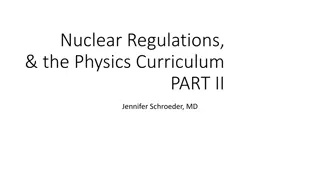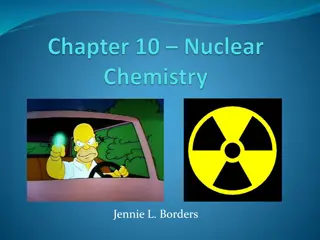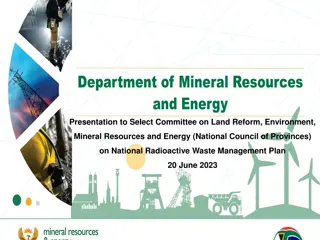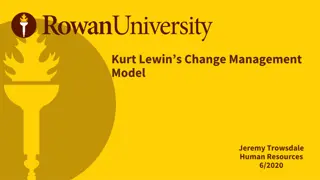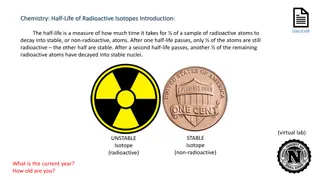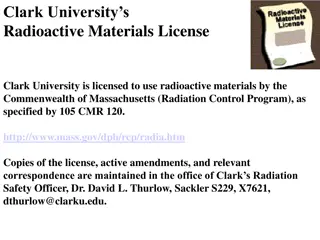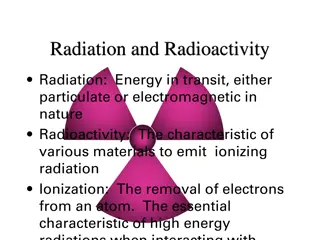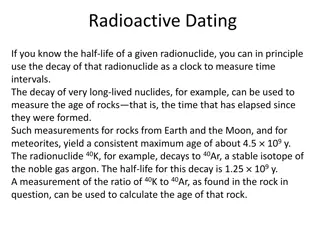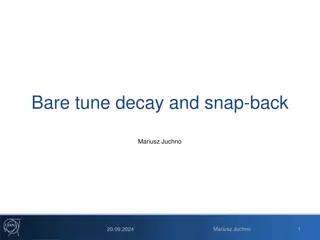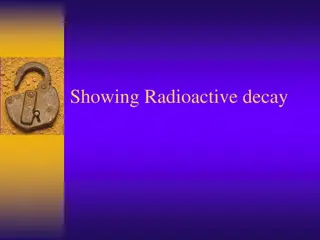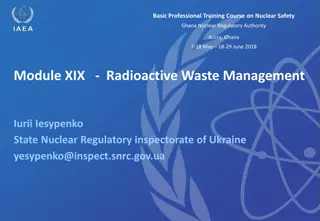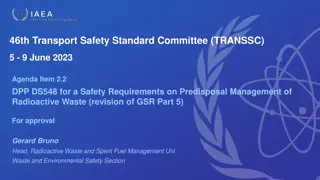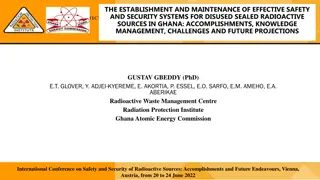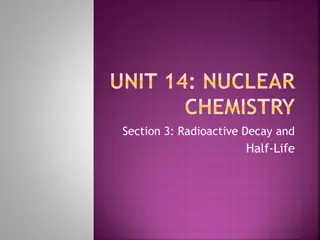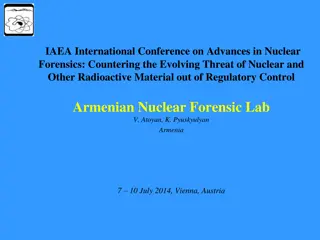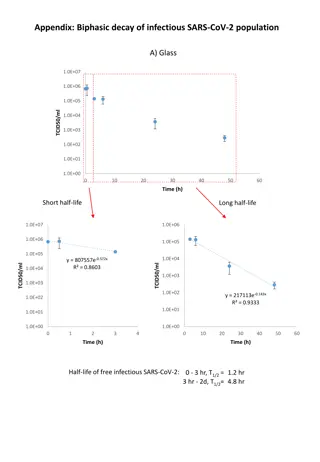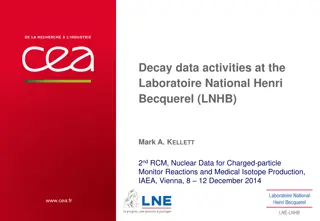
Understanding Radioactive Decay and Dating Methods
Learn about radioactive decay, half-lives, radioactive dating, and the discrepancies between biblical and scientific views on the age of Earth and rocks. Explore the assumptions behind radioactive dating methods and the challenges they pose across disciplines.
Download Presentation

Please find below an Image/Link to download the presentation.
The content on the website is provided AS IS for your information and personal use only. It may not be sold, licensed, or shared on other websites without obtaining consent from the author. If you encounter any issues during the download, it is possible that the publisher has removed the file from their server.
You are allowed to download the files provided on this website for personal or commercial use, subject to the condition that they are used lawfully. All files are the property of their respective owners.
The content on the website is provided AS IS for your information and personal use only. It may not be sold, licensed, or shared on other websites without obtaining consent from the author.
E N D
Presentation Transcript
Radioactive Decay some atoms are unstable occasionally emitting particles from nucleus to become more stable (radioactivity) this changes the atom into a different type of atom (parent element decays to daughter element)
Radioactive Decay cannot predict when a particular atom will decay BUT, when there are many atoms, the whole group decays in a regular manner if you wait a certain amount of time and 3% decays, then if you wait that same amount of time again, 3% of the remainder will have decayed if you wait for to decay (the half-life), then will decay each half-life
Radioactive Decay half-lives 0 1 2 3 4 5 parent-to- daughter 1:0 1:1 1:3 1:7 1:15 1:31 fraction of parent 1 1/2 (50%) 1/4 (25%) 1/8 1/16 (6.25%) 1/32 (3.125%) (100%) (12.5%) parent daughter
Radioactive Dating we can use this to date things K-Ar Rb-Sr U235-Pb207 U238-Pb206 Th-Pb Sm-Nd if we assume some things: 4) how much parent added or taken away 2) how much parent at start 1) constant rate 5) how much daughter added or taken away 3) how much daughter at start
Radioactive Dating but something is not right both biblically & scientifically Biblically Bible Radiometric Dating earth origin ~6000 yrs old 4,500,000,000 yrs old Flood ~4500 yrs old 600-65,000,000 yrs old human origin ~6000 yrs old 2,000,000 yrs old
Radioactive Dating but something is not right both biblically & scientifically Scientifically different radiometric methods on same rock different results Dating Method Rock A Rock B U-238/ Pb-206 Pb-207/ Pb-206 1936 1996 ma. 2176 2247 ma. 2435 2459 ma. 1711 1863 ma. 2045 2111 ma. 2421 2447 ma. U-235/ Pb-207
Radioactive Dating So, what is wrong? Which assumption(s) is(are) wrong? 4) how much parent added or taken away 2) how much parent at start 1) constant rate 5) how much daughter added or taken away 3) how much daughter at start
Radioactive Dating Earth rocks show that billions of years of radiometric decay has occurred since the creation parent/daughter ratios helium (from radiometric decay) in rocks radiation damage fission tracks including in Flood & post-Flood rocks convincing most people that rocks and fossils are millions and billions of years old apparently because of modern laws of physics!
Radioactive Dating Clues 1) Earth rocks show that billions of years of radiometric decay has occurred since the creation 2) Earth rocks contain evidence of youth as well! vestiges from fossil ancestors inter-specific hybrids <<1 million years Flood fossils with C-14 dates 35-50 thousand years helium in creation rocks leaking only ~6000 years <1 million years
Radioactive Dating to reconcile much radioactive decay and short ages radiometric decay rates were much faster in the past (probably divine intervention in Creation & Flood faster rate in past
Radioactive Dating although there is evidence of much decay, a young earth is reasonable because of discordant dates with different methods evidence of youth of radiometrically old rocks God s inspired eye-witness account (more reliable than circumstantial evidence)


